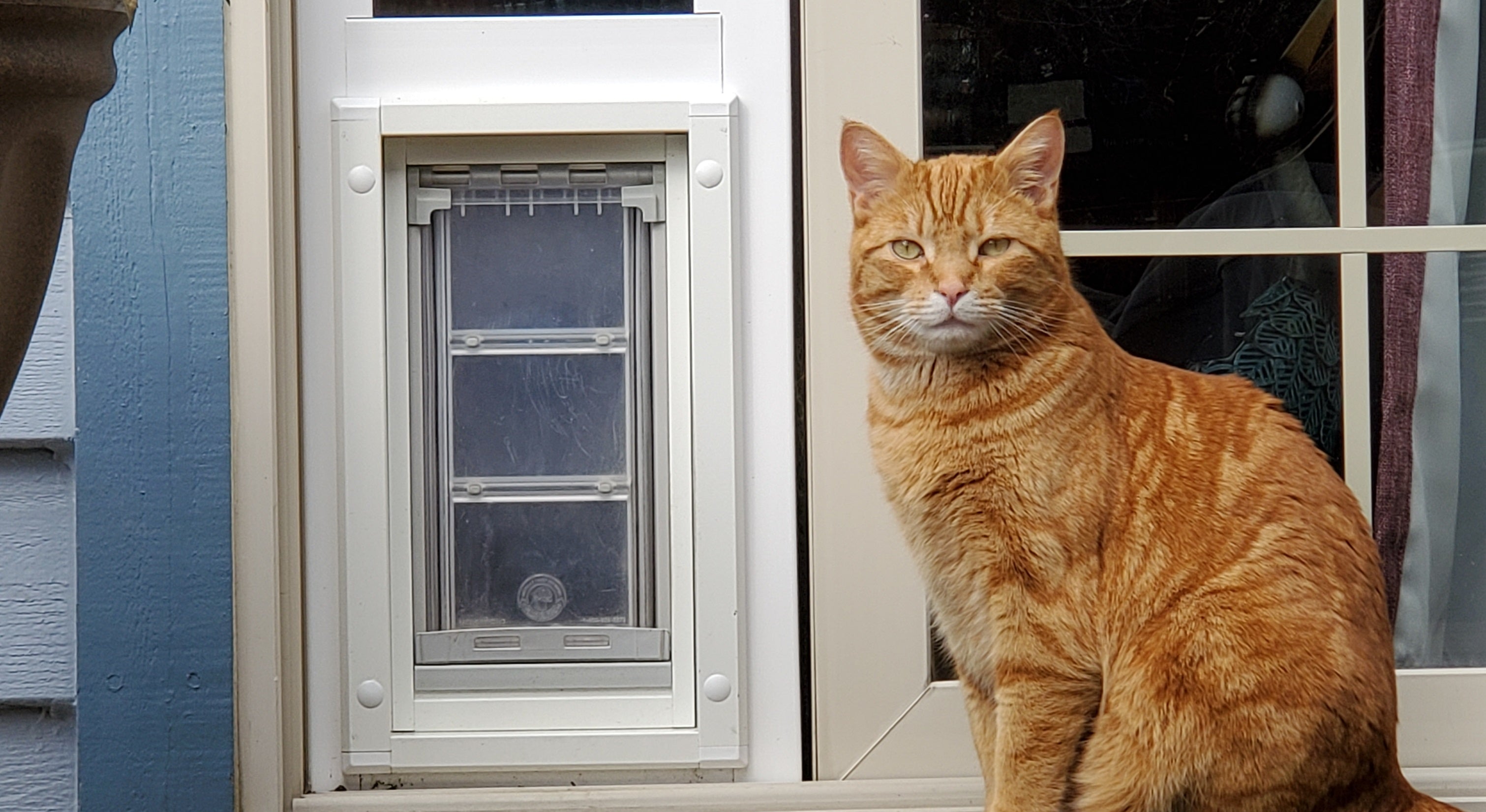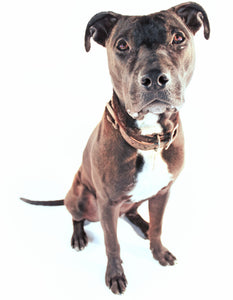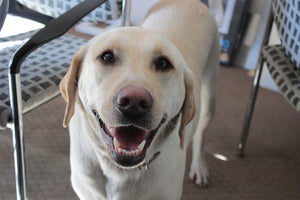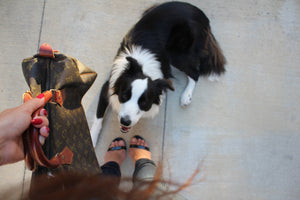How To Keep Cats from Using the Dog Door
Dog doors are a great addition to the home. They allow your dog to come and go on their own terms, freeing up your time spent playing doorman to them. However, when you have an indoor cat it’s natural to feel nervous about them using the dog door. Here are a few tips on how to keep your cat from using the dog door.

Install a Heavy-Duty Dog Door
The Endura Flap is the most insulating dog door on the market. This is the result of the sturdy flap material and strong magnets. In addition to keeping your home insulated, this design makes it challenging for a cat to use the larger Endura Flap sizes. While the small single flap is intended for use by outdoor cats and small dogs, the larger double-flap sizes are much heavier.
For instance, a double flap door mount or double flap wall mount would be very challenging if not impossible for a cat to get through on their own while a single flap door (even with a longer tunnel for the Endura Flap Pet Door for Thick Walls will be easy for cats to use if it only has one flap). If your dog is large enough for the extra-large flap size, that will be nice and heavy to deter curious cats from trying to get through.
It is important to note, however, that even if the flap is too heavy for your cat to push through, this won’t prevent them from slipping out directly behind your dog if they are so inclined. We recommend taking further measures detailed below to make the dog door an unpleasant place for your cat to be.
Use Deterrants Around the Pet Door
There are a few things you can do to make the dog door and the area around it seem like an unpleasant place to be for your cat. This will reduce the time they spend hanging around the dog door and watching the dog come and go. The less time they spend seeing that the dog is using the flap to go outside, the less likely they are to try and mimic this behavior. Here are a couple of options:
- Put aluminum foil on the ground in front of the dog door: Most cats hate the feeling of aluminum foil on their feet, and they will be less likely to walk up to the dog door if the ground is covered in foil that they have to step on to get there.
- Spray citrus scents: Cats do not like the smell of citrus, so spraying a cat-safe citrus deterrent around the dog door a couple of times a day may be enough to keep them away from that area entirely.
- Use a motion-sensing deterrent: Motion-sensing cat deterrents like PetSafe SSSCAT detect when your cat walks past and release a quick and harmless, but starting spray. This scares cats enough to leave the area without harming them in any way. Installing this by the dog door will teach them not to frequent that area.
Train Your Cat Not to Use the Pet Door
You can also use positive reinforcement training to teach your cat not to use the dog door. For instance, you can teach your cat to sit and stay when the dog uses the dog doors. Make sure to use your cat’s favorite tasty treats during this training to encourage continued good behavior.
Clicker training can be a huge help in teaching your cat basic commands like sit and stay. If your cat is super eager to get outside, you can also consider harness training them. This way they can have their supervised outdoor time and they may be less interested in using the dog door to take themselves outside.
Increase the Magnet Strength
Similar to buying a heavy-duty pet door, increasing the magnet strength of the pet door is another way to make it challenging for your cat to use the pet flap. One of the great features of Endura Flap Pet Doors is the adjustable magnet strength. Installing an additional magnet kit will make the flap even more challenging to push through for a cat. Plus, it’ll improve the already high wind resistance of the flap to keep your home insulated year-round.
Lock the Pet Door Flap
Every Endura Flap Pet Door comes with a secure locking cover to block access to the flap when needed. If you notice there are certain times of day when your cat gets very curious to sneak outside through the dog door, consider locking the flap at those times. Locking the flap at night will also ensure your nocturnal kitty won’t be going on a solo adventure around the neighborhood while you're asleep.
Make Indoor Life Exciting for Your Cat
Often cats will want to get outside out of boredom and curiosity. If your cat’s life inside the home is enriching and engaging, they will generally be less likely to seek out excitement by leaving through the dog door. Check out these tips on training an outdoor cat to be an indoor cat to learn some simple ways to make indoor life enjoyable for your cat.
Ultimately, it’s important to be watchful of indoor cats who seem inclined to use the dog door. Following all of the tips above can help reduce the risk of your kitty slipping out through the dog door.
However, if you find they are very determined to get out, it may be best to keep them in an area of the house that doesn't have access to the pet door while the locking cover is off. Then when you put the locking cover back in, you can open up access to the pet door area.
Interested in learning more about cat behavior? Check out this post on understanding your cat’s tail movements and this one on common cat behavior meanings.




